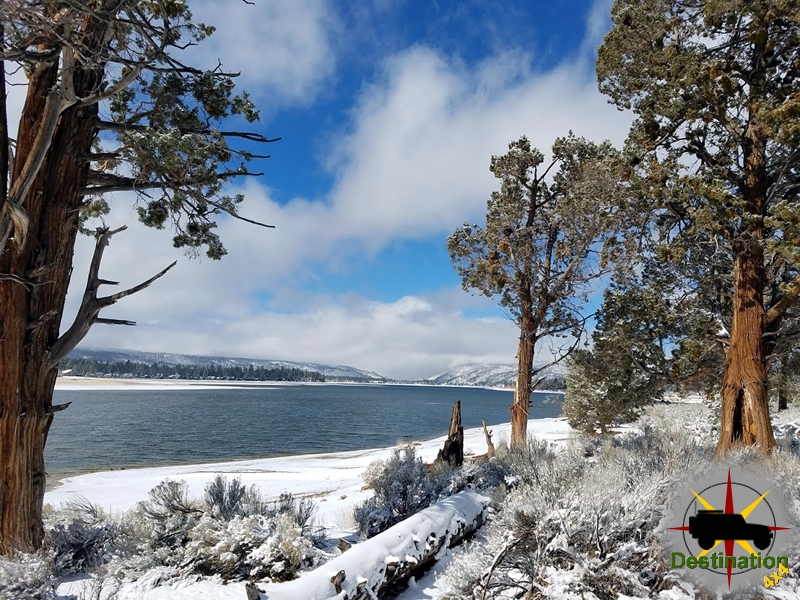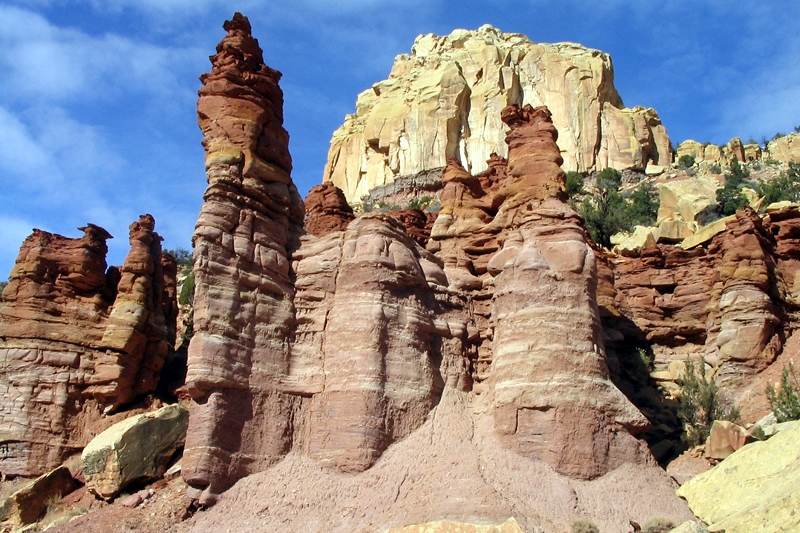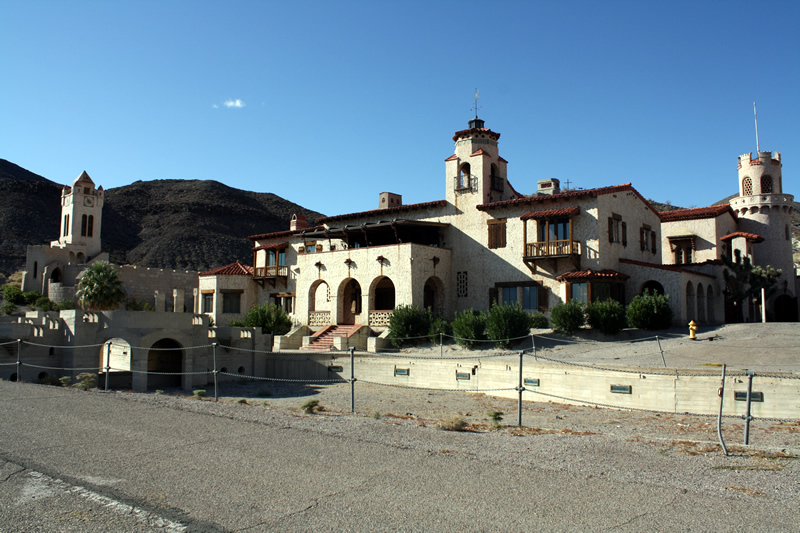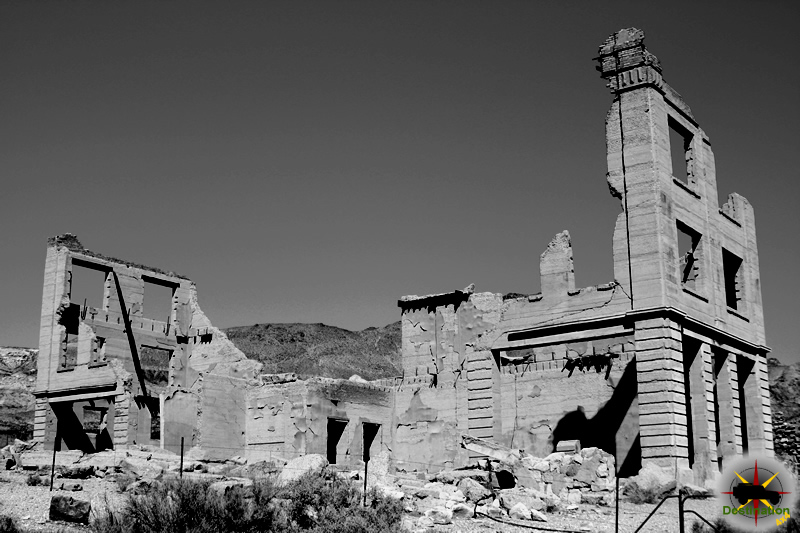
Dayton Station – Pony Express
Dayton, Nevada is a small unincorporated community, and the location of the Dayton Station Pony Express stop in Lyon County, Nevada. The little town of Dayton is also Nevada State Historic Marker #7.
Many historical sources generally agree on the identity of Dayton as a Pony Express stop. In 1859 the Comstock Lode attracted 2,500 people to Dayton and made it a prosperous small town. Dayton had two Pony Express stations. The first existed in a building known as Spafford’s Hall Station, which had opened in 1851. Soon after the Pony Express began, the station moved to a new building that also housed stage activities.
When Richard Burton visited Dayton on October 19, 1860, he described a town that had already lost the gold-rush excitement of the previous year. A gravel pit now occupies the site of Spafford’s Hall Station, and the Union Hotel stands at the second Pony Express station site.
Dayton Map
Dayton Town Summary
| Name | Dayton Station |
| Location | Lyon County, Nevada |
| Latitude, Longitude | 39.2363, -119.5874 |
| NPS Station Number | 163 |
| Next Westbound Station | Carson City Station |
| Next Eastbound Station | Miller’s / Reed Station |
Nevada State Historic Marker Text
Dayton, one of the earliest settlements in Nevada, was first known as a stopping place on the river for California–bound pioneers. Coming in from the desert, they rested here before continuing westward.
In 1849, Abner Blackburn found a gold nugget at the mouth of Gold Canyon and prospecting began in the canyon to the north. Ten years later, this led to the discovery of the fabulous ore deposits at Gold Hill and Virginia City.
Called by several different names in its early years, the place became Dayton in 1861, named in honor of John Day who laid out the town.
For many decades Dayton prospered as a mill and trading center. It remained the county seat for Lyon County until 1911.
CENTENNIAL MARKER No. 7
STATE HISTORIC PRESERVATION OFFICE
References
Carson City Station – Pony Express Station
Carson City Station was a pony express station located between on Carson Street between Forth and Fifth Street in Carson City, Nevada. Founded in 1858, Carson City was was named for frontiersman, Kit Carson. The town operated as a social and supply center for the nearby mining settlements of the Comstock Lode in the mid-1800’s. In 1864 it was designated the state capital. The station is designated as a home station, where extra horses, firearms, men and provision are kept.
In 1860. the town only had one street, which is lined with a double row of saloons, a few assay offices, a general store, and the hotel. The pony express station operated out of a hotel that located between 4th and 5th Streets, near the original Ormsby House.
Pony Express
Sources generally agree on the identity of Carson City as a pony express stop. Little information is available about the Carson City Station site, which was located on what is now Carson Street between Fourth and Fifth. Bolivar Roberts, division superintendent, used site as a base in March 1860 to hire riders and station keepers. Since he worked as part of a team to build or acquire other stations along the route, Roberts also probably helped established the location.
| Name | Carson City Station |
| Location | Carson City, Nevada |
| Latitude, Longitude | |
| NPS Statopm Number | 164 |
| Next Westbound Station | Genoa |
| Next Eastbound Station | Dayton Station |
References
Genoa Station – Pony Express
Originally part of the Utah Territory, Genoa is a former Pony Express Station and unincorporated community in Douglas County, Nevada. The settlement was first founded in 1850 by Mormon Settlers when they founded the Mormon Station as a trading post for travelers bound for California. The original trading post operates in a roofless log enclosure built by H.S. Beatie and other Mormon settlers.
Travelers along the Carson Route to California could purchase supplies such clothing, tobacco, meat, canned goods, coffee, beans, sugar, flour and bacon. In 1852, the settlement hosts heavy emigrant traffic and a supports a post office, sawmills and blacksmith.
Pony Express
Most historical sources agree on the identity of Genoa as a station as well. However, James Pierson also identifies the site as the Old Mormon Station. The old post office also served as the station, which seems rather on point. The livery stable across the street supplied riders with fresh horses.
Much of Genoa, including the original fort, station, and hotel, was destroyed in a fire in 1910, but a replica of the fort was built in 1947. In 1976 the post office site was a vacant lot, and a picnic area occupied the livery stable location.
Cheers
Genoa is home to the oldest bar in the state of Nevada, which opened in 1853
Genoa Station Summary
| Name | Genoa Station |
| Location | Douglas County, Nevada |
| Latitude, Longitude | 39.0044, -119.8472 |
| Other Names | Mormon Station |
| GNIS | 859807 |
| Post Office | 1852 – |
| Newspaper | Territorial Enterprise (1858 – 1860) |
| NPS Station Number | 165 |
| Next Westbound Station | Van Sickle’s Station |
| Nest Eastbound Station | Carson City Station |
References
Van Sickle’s Station – Pony Express
The Van Sickle’s Station is the second Pony Express Station encountered when traveling east from Friday’s Station at the California/Nevada State Line. The Van Sickle Station is located at the bottom of Old Kingsbury Grade in Carson Valley.
In 1857, rancher Henry Van Sickle built a two-story hotel to server traveler’s on their way to California. The building contained with a bar, kitchen and a store. The location is well suited as a rest stop before the climb over the high Sierra Nevada. The location served as a Pony Express in 1860, where the riders could stop to change horses. The National Park Service does not list this station on their website, so it’s active participation in the Pony Express could be in doubt. The National Pony Express Associate does list this location as a station for the pony express. This station may be on some lists as the riders would travel near the location, and it could serve as a navigation point.
Henry Van Sickle killed the outlaw and murderer Sam Brown on July 6th, 1860. Van Sickle is fully exonerated on July 8th, 1860, when the coroners jury found “Death by a just dispensation of an all-wise providence at his own expense”.
Over time, the hotel fell into disrepair and was eventually torn down in 1909. Today, much of the history surrounding this property has been preserved in the current residence which was re-constructed in 1944 from the still standing stone store, warehouse, bar and blacksmith buildings of the original station, using the original hand-hewn beams and stone from the old quarry
Van Sickle’s Station Trail Map
Location Summary
| Name | Van Sickle’s Station |
| Location | Douglas County, Nevada |
| Latitude, Longitude | 38.9415, -119.8382 |
| Next Westbound Station | Friday’s Station |
| Next Eastbound Station | Genoa Station |
References
Friday’s Station – Pony Express
Friday’s Station is Union Army Military Post and Pony Express Station located near Lake Tahoe, in Douglas County, Nevada. The two story building is originally built as an inn and pony express station in 1860. The station is designated as a home station, where extra horses, firearms, men and provision are kept.

Originally, the buildings are intended for the Union Army in the District of California. The location is chosen for the pony express due to its proximety to Lake Tahoe and the state line. Becuase of its location, the station is refered to as the “Lakeside Station” by some. In April, 1860, Robert (Pony Bob) Haslam made the first ride and shipment of mail from Sacramento at Friday’s Station and made his first run to Buckland’s Station, a distance of seventy five miles to the east.

After the pony express failed, the property operated as a resort known as the “Buttermilk Bonanza Ranch.” Today, the original buildings still state and recognized as California Historical Landmark #728 and is listed on the National Register of Historic Places.
Location Map
Location Summary
| Name | Friday’s Station |
| Location | Douglas County, Nevada |
| Other Names | Lakeside Station Park Cattle Company Residence Buttermilk Bonanza Ranch |
| Latitude, Longitude | 38.9639, -119.9347 |
| Elevation | 6,324 feet |
| California Historical Landmark | 728 |
| National Register of Historic Places | 86003259 |
| NPS Station Number | 166 |
| Next Westbound Station | |
| Next Eastbound Station | Van Sickle’s Station |










